Study on Wax Deposition Process of Crude Oil System under Shear Flow Field Conditions
Abstract
:1. Introduction
2. Experimental Methods
3. Results and Discussions
3.1. The Feature of Wax Deposition
3.2. Effect of Different Shear Rates on Wax Deposition in Crude Oil Systems
3.3. Effect of Different Wax Content on Deposition
4. Conclusions
- (1)
- Three-layer adsorption was used to deposit wax on the Fe surface, and the vdW interaction was the primary force behind this process. The Fe surface was subjected to strong vdW interaction by the first deposition layer and weak vdW interaction by the second deposition layer. Between deposited and un-deposited molecules, the second and third layers provided a transition zone where the relative concentration of wax was higher than that in the free system but lower than that in the first deposition layer.
- (2)
- Four steps can be distinguished in the process of crude oil depositing on the surface of Fe when shear flow conditions are met. The molecules migrated onto the Fe surface during the first step of diffusion. During the second stage, two forms of deposition were formed when wax molecules were adsorbed onto a solid surface in parallel caused by Brownian motion. During the third and fourth phases, bridging effects and intermolecular interactions caused flocculants to form between the crude oil system and the deposited layer. The shearing motion causes the second and third deposition layers to gradually peel off and slip.
- (3)
- Under varying shear rates and wax contents, the process of crude oil systems’ wax deposition was comparable, and the thickness of different layers was constant. The vdW interaction was the primary force on deposition.
Author Contributions
Funding
Data Availability Statement
Conflicts of Interest
References
- Li, B.; Guo, Z.; Du, M.; Han, D.; Han, J.; Zheng, L.; Yang, C. Research status and outlook of mechanism, characterization, performance evaluation, and type of pour point depressants in waxy crude oil: A Review. Energy Fuels 2024, 38, 7480–7509. [Google Scholar] [CrossRef]
- Azizollah, K. Asphaltene precipitation and inhibition in carbonate reservoirs. Pet. Sci. Technol. 2017, 35, 515–521. [Google Scholar]
- van der Geest, C.; Melchuna, A.; Bizarre, L.; Bannwart, A.C.; Guersoni, V.C. Critical review on wax deposition in single-phase flow. Fuel 2021, 293, 120358. [Google Scholar] [CrossRef]
- Ma, S.; Liu, Z.; Zheng, J.; Wu, Z.; Li, N.; Guan, X.; Han, J.; Yang, M.; Song, Y. Natural gas hydrate decomposition Characteristics at the exploitation anaphase via sediment warming. Energy Fuels 2024, 38, 14334–14342. [Google Scholar] [CrossRef]
- D’Avila, F.G.; Silva, C.M.F.; Steckel, L.; Ramos, A.C.S.; Lucas, E.F. Influence of asphaltene aggregation state on the wax crystallization process and the efficiency of EVA as a wax crystal modifier: A study using model systems. Energy Fuels 2020, 34, 4095–4105. [Google Scholar] [CrossRef]
- Singh, P.; Fogler, H.S.; Nagarajan, N. Prediction of the wax content of the incipient wax-oil gel in a pipeline: An application of the controlled-stress rheometer. J. Rheol. 1999, 43, 1437–1459. [Google Scholar] [CrossRef]
- Li, B.; Guo, Z.; Zheng, L.; Shi, E.; Qi, B. A comprehensive review of wax deposition in crude oil systems: Mechanisms, influencing factors, prediction and inhibition techniques. Fuel 2024, 357, 129676. [Google Scholar] [CrossRef]
- Matzain, A.; Apte, M.S.; Zhang, H.Q.; Volk, M.; Brill, J.P.; Creek, J.L. Investigation of paraffin deposition during multiphase flow in pipelines and well-bores-part 1: Experiments. J. Energy Resour. Technol. 2002, 123, 180–186. [Google Scholar] [CrossRef]
- Tinsley, J.F.; Prud’Homme, R.K.; Guo, X.; Adamson, D.H.; Callahan, S.; Amin, D.; Shao, S.; Kriegel, R.M.; Saini, R. Novel laboratory cell for fundamental studies of the effect of polymer additives on wax deposition from model crude oils. Energy Fuels 2007, 21, 1301–1308. [Google Scholar] [CrossRef]
- Hoffmann, R.; Amundsen, L. Single-phase wax deposition experiments. Energy Fuels 2010, 24, 1069–1080. [Google Scholar] [CrossRef]
- Soedarmo, A.A.; Daraboina, N.; Lee, H.S.; Sarica, C. Microscopic study of wax precipitation—Static conditions. Energy Fuels 2016, 30, 954–961. [Google Scholar] [CrossRef]
- Aiyejina, A.; Chakrabarti, D.P.; Pilgrim, A.; Sastry, M. Wax formation in oil pipelines: A critical review. Int. J. Multiph. Flow 2011, 37, 671–694. [Google Scholar] [CrossRef]
- Kannan, S.N.; Daraboina, N.; Venkatesan, R.; Sarica, C. Settling and re-entrainment of wax particles in near-gelling systems. AIChE J. 2017, 64, 765–772. [Google Scholar] [CrossRef]
- Janamatti, A.; Lu, Y.; Ravichandran, S.; Sarica, C.; Daraboina, N. Influence of operating temperatures on long-duration wax deposition in flow lines. J. Pet. Sci. Eng. 2019, 183, 106373. [Google Scholar] [CrossRef]
- Yang, J.; Lu, Y.; Daraboina, N.; Sarica, C. Wax deposition mechanisms: Is the current description sufficient? Fuel 2020, 275, 117937. [Google Scholar] [CrossRef]
- van der Geest, C.; Bizarre, L.; Melchuna, A.; Pinheiro, I.F.; Guersoni, V.C. Evidence that wax deposition is a phase transition rather than a molecular diffusion phenomenon. Fuel 2022, 313, 122940. [Google Scholar] [CrossRef]
- Santos, G.; Daraboina, N.; Sarica, C. Dynamic microscopic study of wax deposition: Particulate deposition. Energy Fuels 2021, 35, 12065–12074. [Google Scholar] [CrossRef]
- Van Der Geest, C.; Guersoni, V.C.B.; Merino-Garcia, D.; Bannwart, A.C. Wax deposition experiment with highly paraffinic crude oil in laminar single-phase flow unpredictable by molecular diffusion mechanism. Energy Fuels 2018, 32, 3406–3419. [Google Scholar] [CrossRef]
- Li, B.; Li, N.; Yang, M.; Liu, G.; Zheng, L.; Yang, C.; Qiao, W.; Jiao, T. Molecular dynamics simulation of yield thixotropy of crude oil systems. Colloids Surf. A Physicochem. Eng. Asp. 2022, 643, 128759. [Google Scholar] [CrossRef]
- Bai, S.; Kubelka, J.; Piri, M. Wettability reversal on dolomite surfaces by divalent ions and surfactants: An experimental and mo-lecular dynamics simulation study. Langmuir 2021, 37, 6641–6649. [Google Scholar] [CrossRef]
- Li, B.; Guo, Z.; Li, N.; Wang, D.; Li, G.; Zheng, L.; Qi, B.; Jiao, T. Molecular dynamics simulation of wax deposition in crude oil systems. Colloids Surf. A Physicochem. Eng. Asp. 2023, 674, 131965. [Google Scholar] [CrossRef]
- Gan, Y.; Cheng, Q.; Wang, Z.; Yang, J.; Sun, W.; Liu, Y. Molecular dynamics simulation of the nucleation and gelation process for a waxy crude oil multiphase system under different physical–chemical influencing factors. Energy Fuels 2019, 33, 7305–7320. [Google Scholar] [CrossRef]
- Gan, Y.; Cheng, Q.; Wang, Z.; Yang, J.; Sun, W.; Liu, Y. Molecular dynamics simulation of the microscopic mechanisms of the dissolution, diffusion and aggregation processes for waxy crystals in crude oil mixtures. J. Pet. Sci. Eng. 2019, 179, 56–69. [Google Scholar] [CrossRef]
- San-Miguel, M.A.; Rodger, P.M. Wax deposition onto Fe2O3 surfaces. Phys. Chem. Chem. Phys. 2002, 5, 575–581. [Google Scholar] [CrossRef]
- Zhang, J.; Zhang, M.; Wan, J.; Li, W. Theoretical study of the prohibited mechanism for Ethylene/Vinyl Acetate co-polymers to the wax crystal growth. J. Phys. Chem. B 2008, 112, 36–43. [Google Scholar] [CrossRef] [PubMed]
- Ren, B.; Min, F.; Liu, L.; Chen, J.; Liu, C.; Lv, K. Adsorption of different PAM structural units on kaolinite (001) surface: Density functional theory study. Appl. Surf. Sci. 2019, 504, 144324. [Google Scholar] [CrossRef]
- Quezada, G.R.; Jeldres, R.I.; Fawell, P.D.; Toledo, P.G. Use of molecular dynamics to study the conformation of an anionic polyelectrolyte in saline medium and its adsorption on a quartz surface. Miner. Eng. 2018, 129, 102–105. [Google Scholar] [CrossRef]
- Sun, W.Y.; Zeng, H.B.; Tang, T. Synergetic adsorption of polymers on montmorillonite: Insights from molecular dynamics simulations. Appl. Clay Sci. 2020, 193, 105654. [Google Scholar] [CrossRef]
- Xia, Y.; Rong, G.; Xing, Y.; Gui, X. Synergistic adsorption of polar and nonpolar reagents on oxygen-containing graphite surfaces: Implications for low-rank coal flotation. J. Colloid Interface Sci. 2019, 557, 276–281. [Google Scholar] [CrossRef]
- Jeldres, M.; Jeldres, R.I.; Toro, N.; Quezada, G.R.; Robles, P.; Toledo, P.G. Understanding the flocculation mechanism of quartz and kaolinite with polyacrylamide in seawater: A molecular dynamics approach. Colloids Surf. A Physicochem. Eng. Asp. 2021, 608, 125576. [Google Scholar] [CrossRef]
- Martin, M.G. Comparison of the AMBER, CHARMM, COMPASS, GROMOS, OPLS, TraPPE and UFF force fields for prediction of vapor-liquid coexistence curves and liquid densities. Fluid Phase Equilibria 2006, 248, 50–55. [Google Scholar] [CrossRef]
- Zhong, J.; Wang, X.; Du, J.; Wang, L.; Yan, Y.; Zhang, J. Combined molecular dynamics and quantum mechanics study of oil droplet adsorption on different self-assembly monolayers in aqueous solution. J. Phys. Chem. C 2013, 117, 12510–12519. [Google Scholar] [CrossRef]
- Sato, Y.; Hayami, R.; Miyase, Y.; Ideno, Y.; Yamamoto, K.; Gunji, T. Preparation and properties of methyl- and cyclohexylsilsesquioxane oligomers as organic-inorganic fillers. J. Sol-Gel Sci. Technol. 2020, 95, 474–481. [Google Scholar] [CrossRef]
- Burger, E.; Perkins, T.; Striegler, J. Studies of wax deposition in the Trans Alaska pipeline. J. Pet. Technol. 1981, 33, 1075–1086. [Google Scholar] [CrossRef]
- Zeng, J.P.; Dai, Y.; Shi, W.Y.; Shao, J.L.; Sun, G.X. Molecular dynamics simulation on the interaction between polymer inhibitors and anhydrite surface. Surf. Interface Anal. 2015, 47, 896–902. [Google Scholar] [CrossRef]
- Allinger, N.L.; Zhou, X.; Bergsma, J. Molecular mechanics parameters. J. Mol. Struct. Theochem. 1994, 312, 69–83. [Google Scholar] [CrossRef]
- Dickinsona, E.; Eriksson, L. Particle flocculation by adsorbing polymers. Adv. Colloid Interface Sci. 1991, 43, 1–29. [Google Scholar] [CrossRef]
- Fan, K.F. Wax Deposition of Waxy Crude Oil and Water-in-Oil Emulsion. Ph.D. Thesis, China University of Petroleum, Beijing, China, 2017. (In Chinese). [Google Scholar]
- Creek, J.; Lund, H.J.; Brill, J.P.; Volk, M. Wax deposition in single phase flow. Fluid Phase Equilibria 1999, 158–160, 801–811. [Google Scholar] [CrossRef]
- Venkatesan, R. The Deposition and Rheology of Organic Gels. Ph.D. Thesis, University of Michigan, Ann Arbor, MI, USA, 2004. [Google Scholar]
- Joanny, J. Polymers at interfaces. Interface Sci. 2003, 11, 157–158. [Google Scholar] [CrossRef]
- Ren, B.; Lv, K.; Min, F.; Chen, J.; Liu, C. A new insight into the adsorption behavior of NPAM on kaolinite/water interface: Experimental and theoretical approach. Fuel 2021, 303, 121299. [Google Scholar] [CrossRef]
- Li, C.X.; Bai, F.; Wang, Y. Influence of crude oil composition on wax deposition on tubing wall. CIESC J. 2014, 65, 4571–4578. [Google Scholar]
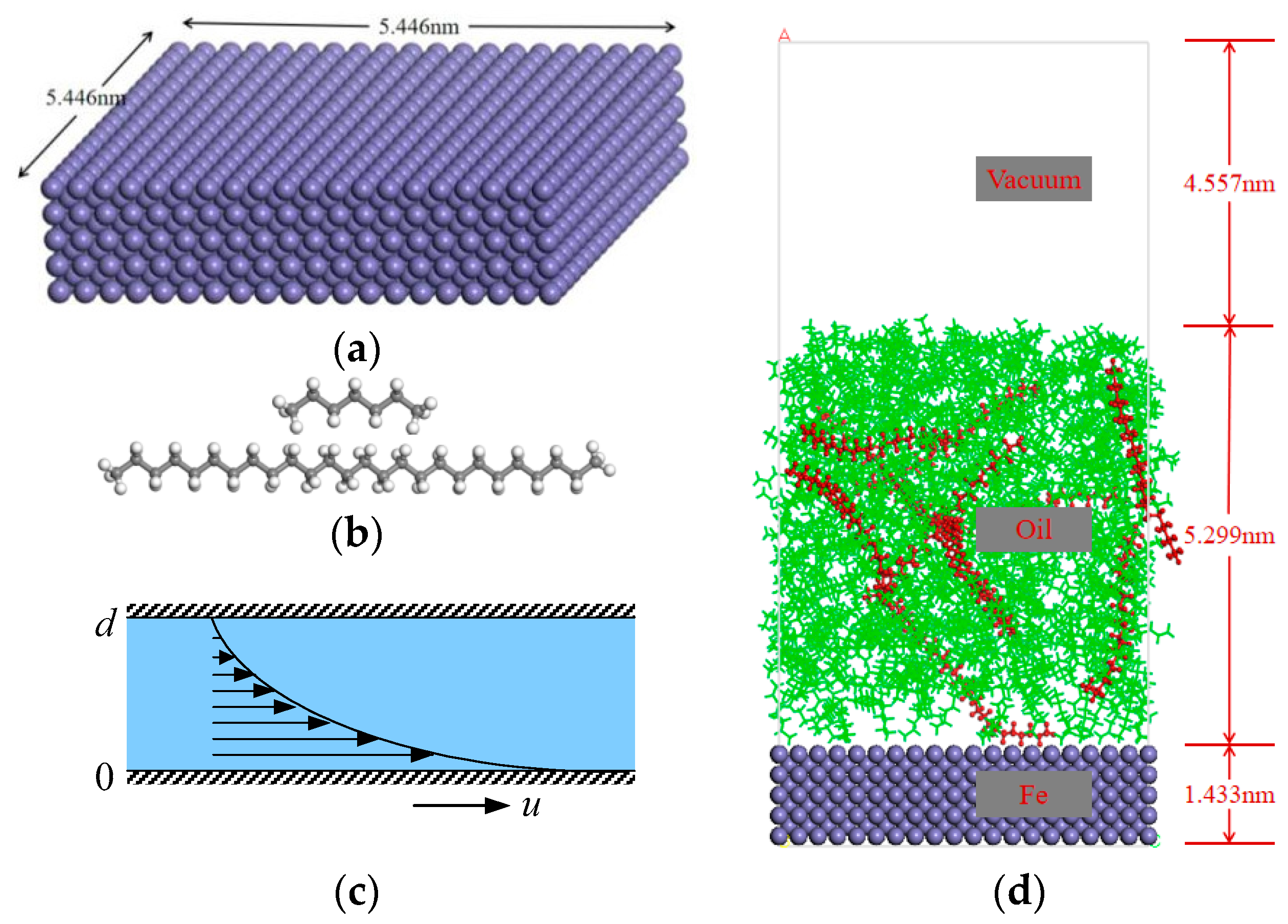


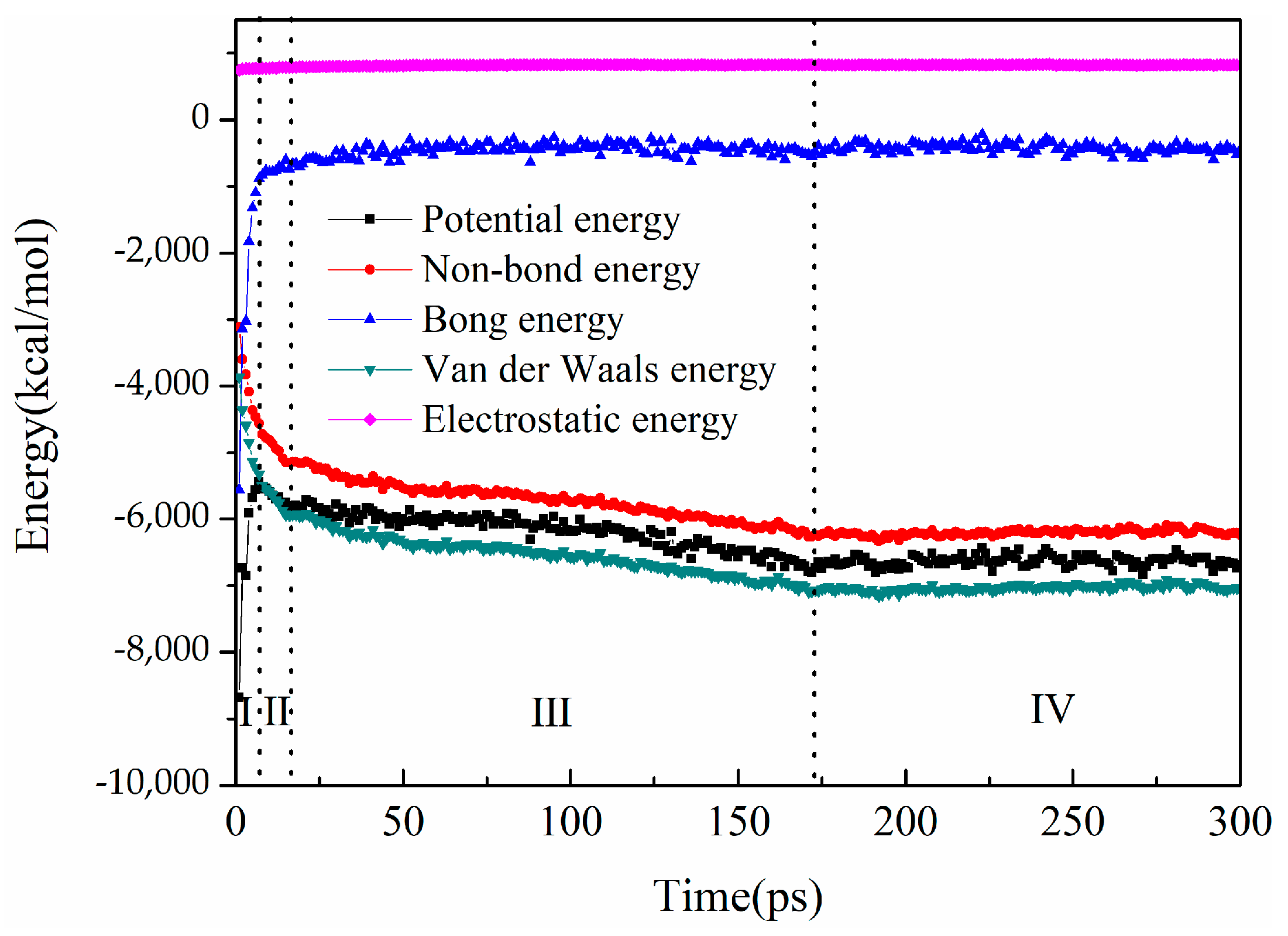

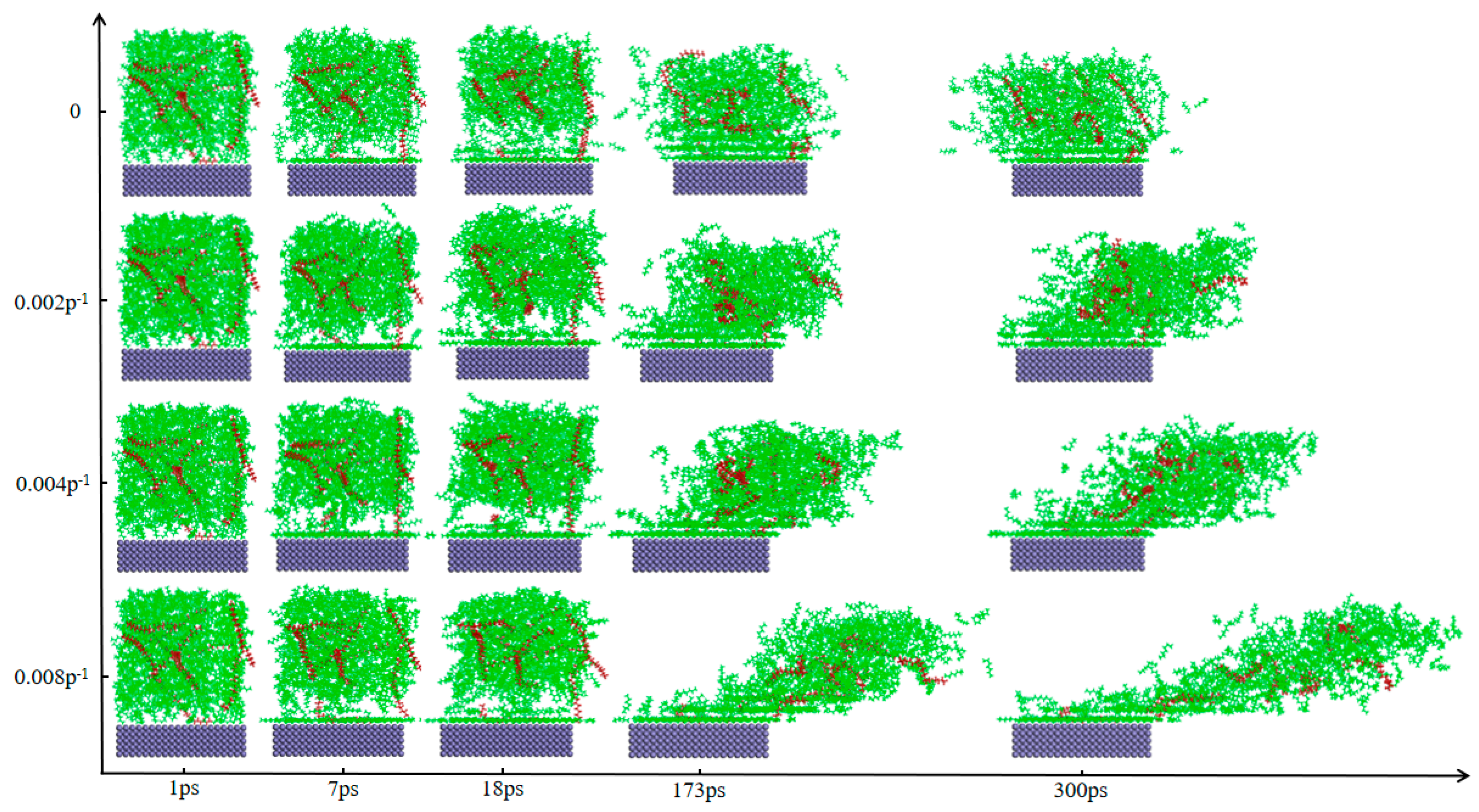
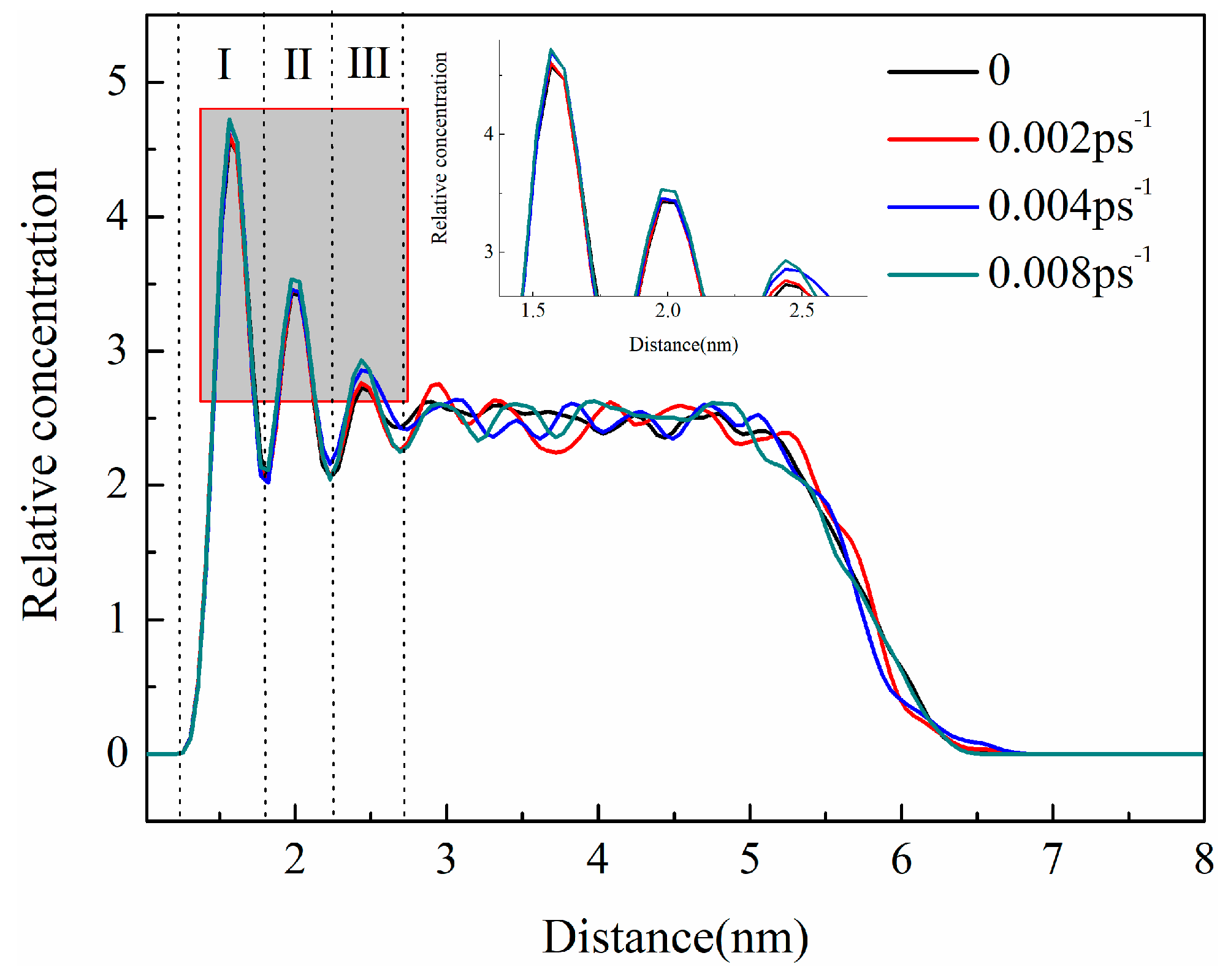
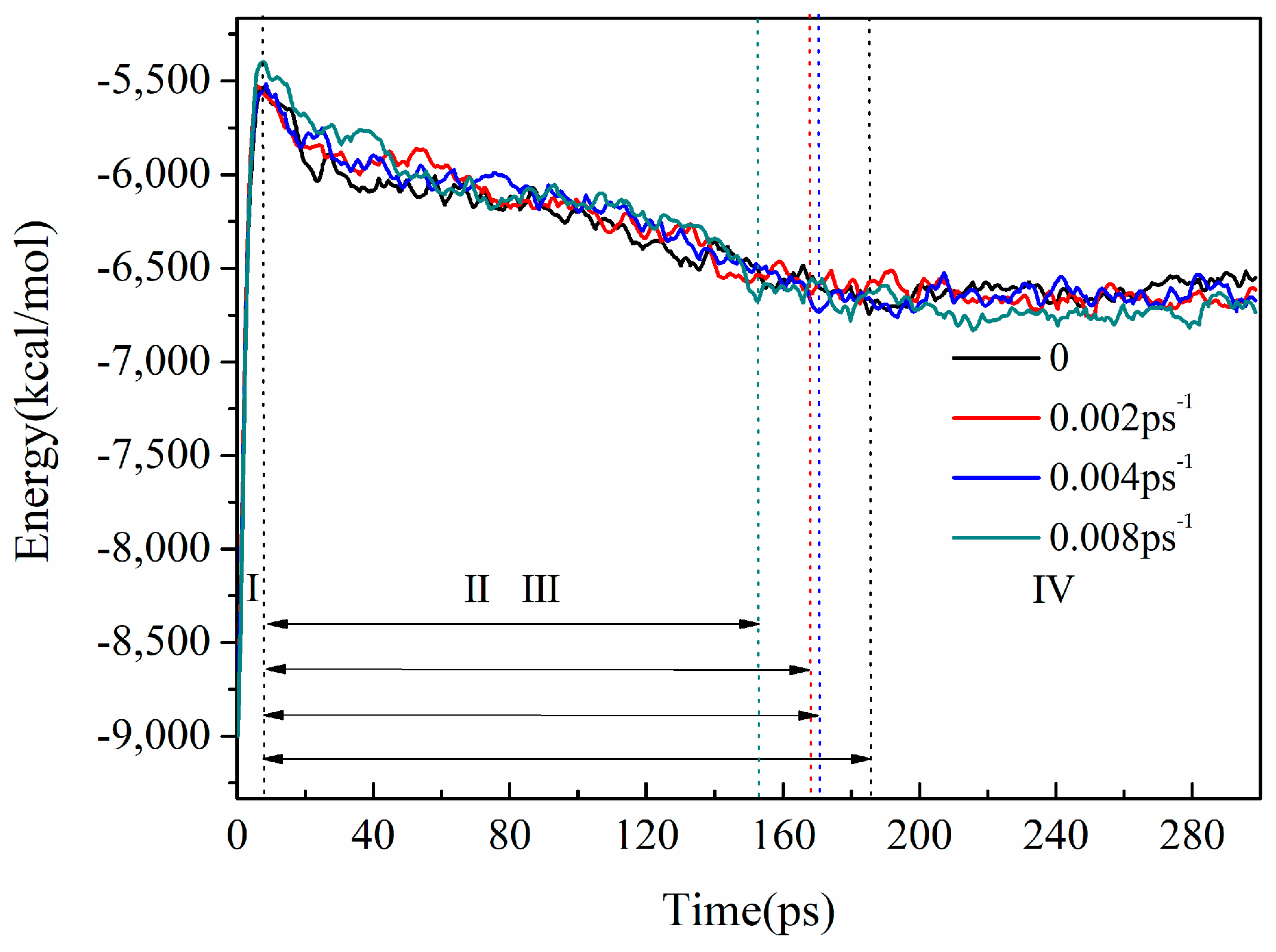
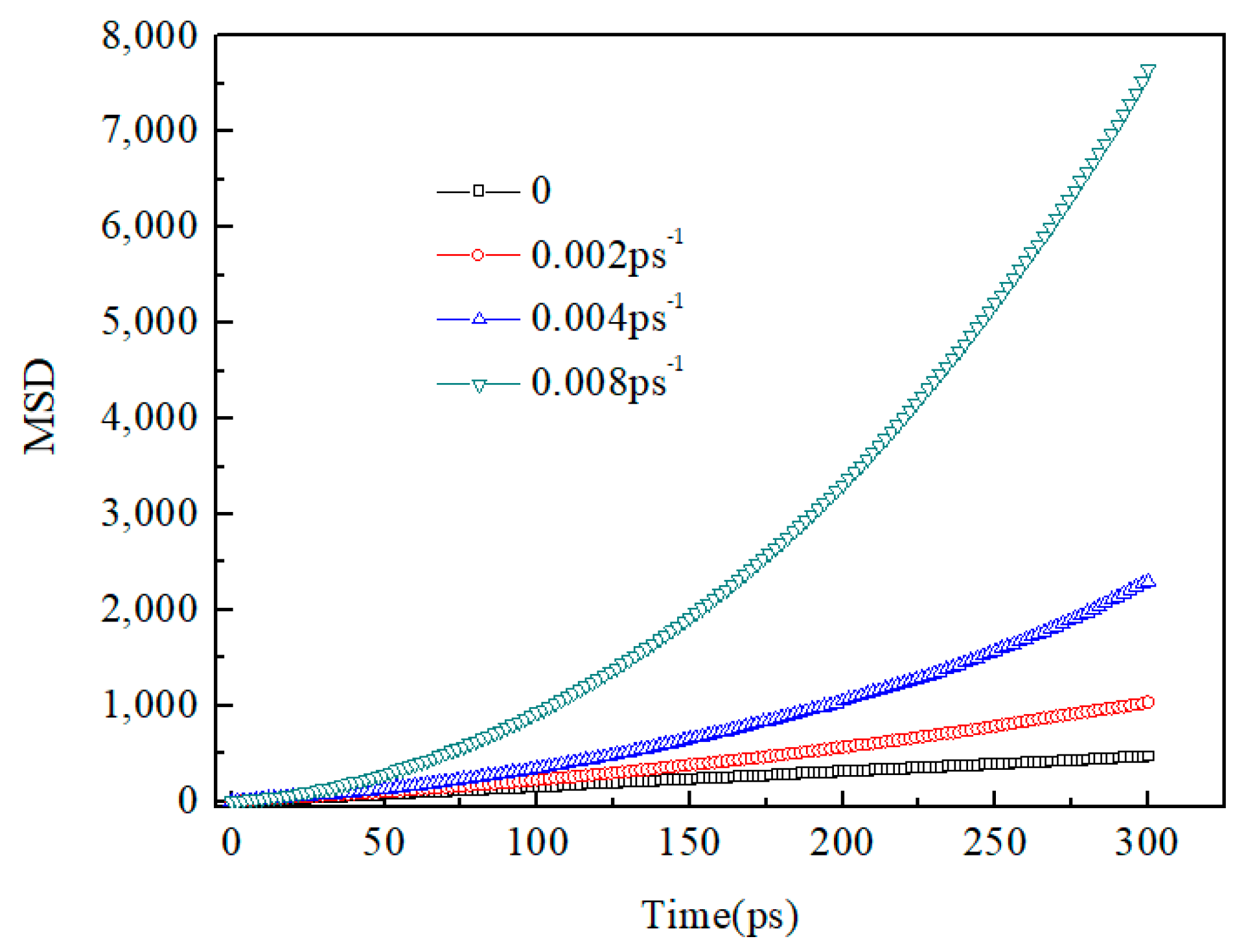





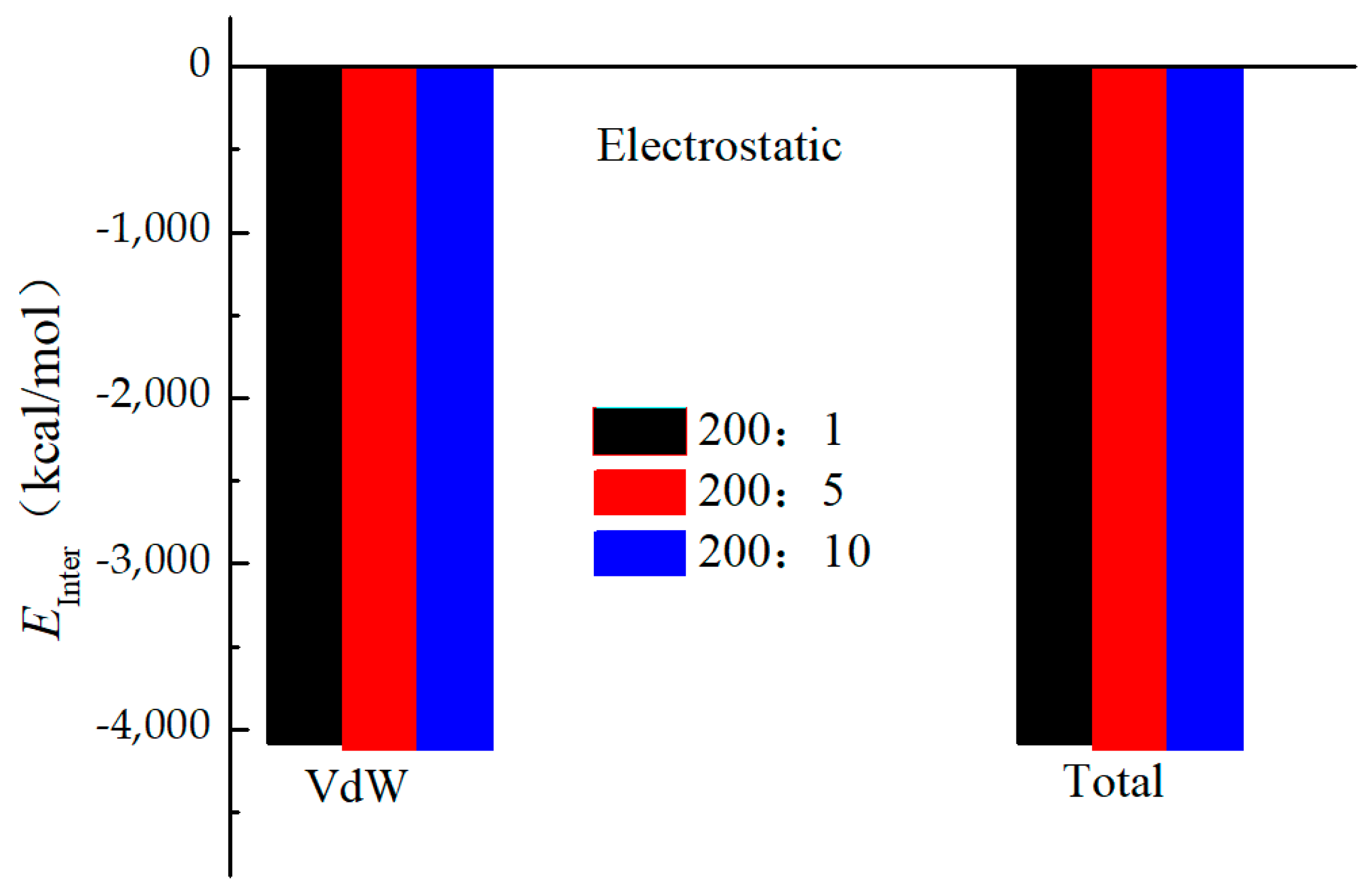
Disclaimer/Publisher’s Note: The statements, opinions and data contained in all publications are solely those of the individual author(s) and contributor(s) and not of MDPI and/or the editor(s). MDPI and/or the editor(s) disclaim responsibility for any injury to people or property resulting from any ideas, methods, instructions or products referred to in the content. |
© 2024 by the authors. Licensee MDPI, Basel, Switzerland. This article is an open access article distributed under the terms and conditions of the Creative Commons Attribution (CC BY) license (https://creativecommons.org/licenses/by/4.0/).
Share and Cite
Liu, H.; Yang, C.; Qi, J.; Liu, C.; Luo, H.; Li, B. Study on Wax Deposition Process of Crude Oil System under Shear Flow Field Conditions. Processes 2024, 12, 1774. https://doi.org/10.3390/pr12081774
Liu H, Yang C, Qi J, Liu C, Luo H, Li B. Study on Wax Deposition Process of Crude Oil System under Shear Flow Field Conditions. Processes. 2024; 12(8):1774. https://doi.org/10.3390/pr12081774
Chicago/Turabian StyleLiu, Haibo, Chao Yang, Jingjing Qi, Chao Liu, Haijun Luo, and Bingfan Li. 2024. "Study on Wax Deposition Process of Crude Oil System under Shear Flow Field Conditions" Processes 12, no. 8: 1774. https://doi.org/10.3390/pr12081774




